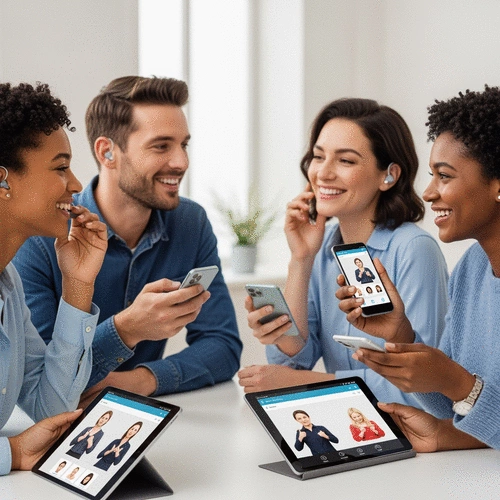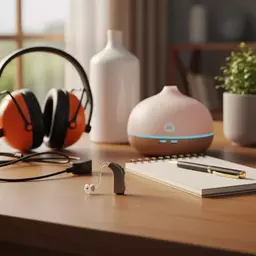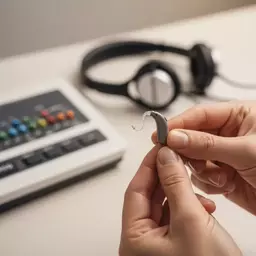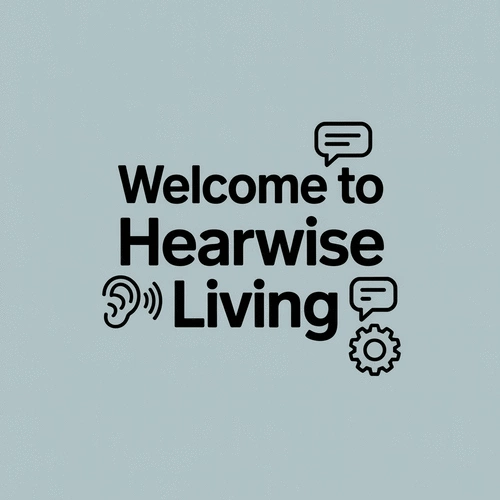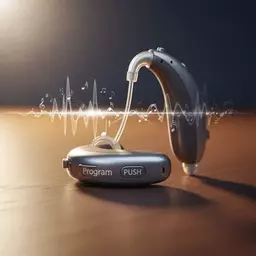Effective communication is not only about speaking and listening; it’s about understanding. For those with hearing loss, this can be a journey filled with challenges but also opportunities for deeper connections. As we explore communication strategies and tools tailored for individuals facing hearing loss, you'll discover ways to enhance your interactions and reclaim your voice.
What You Will Learn
- Understanding the unique communication challenges faced by individuals with hearing loss.
- The significance of adapting communication strategies, such as using clear speech and visual cues.
- Exploring technological advancements like Bluetooth hearing aids and real-time captioning apps that improve communication experiences.
- Evaluating communication tools based on personal needs, including real-time functionality and user-friendly interfaces.
- Utilizing augmentative and alternative communication (AAC) devices to enhance expression and foster more meaningful interactions.
Enhancing Communication: Technology and Tools for Hearing Loss
This visual highlights the key technological advancements and evaluation criteria for selecting communication tools to bridge the gap for individuals with hearing loss. For more insights into optimizing your communication, consider exploring enhancing home communication with hearing loss.
Technological Advancements
- ✓ Hearing aids with Bluetooth connectivity
- ✓ Real-time captioning apps (e.g., Google Live Transcribe)
- ✓ Speech-to-text applications
- ✓ Assistive listening devices
Key Features to Evaluate
- ★ Real-Time Functionality (instant captioning/transcription)
- ★ User-Friendly Interface (intuitive and easy navigation)
- ★ Language Support (preferred language/dialect)
- ★ Customization Options (settings for hearing preferences)
Informed Decision Process
- List potential apps/devices.
- Research features and user reviews.
- Consider cost vs. value.
- Ask for friends' or family's experiences.
AAC Devices & Communication Boards
- → Visual Support (aids in conveying thoughts)
- → Versatility (customizable vocabulary)
- → Accessibility (bridges gaps in various environments)

Understanding Communication Challenges for People with Hearing Loss
Living with hearing loss presents unique communication challenges that can affect daily interactions and relationships. Have you ever felt isolated during conversations or struggled to keep up in group settings? You're not alone; many individuals experience similar hurdles, and recognizing these challenges is the first step toward finding effective solutions.
Effective communication is at the heart of our connections with others. For those of us navigating hearing loss, it can often feel like a barrier is in place. It's crucial to understand how hearing loss impacts communication and what we can do to bridge that gap. By fostering a supportive environment and utilizing available resources, we can enhance our interactions and maintain meaningful relationships. Discover more about building resilience with hearing loss to navigate these challenges effectively.
The Importance of Effective Communication
Effective communication goes beyond merely hearing words—it involves understanding context, tone, and the emotions behind them. For individuals with hearing loss, adapting communication strategies can lead to more fulfilling interactions. This may include using clear speech, visual cues, or technology to improve understanding. Let’s explore some key aspects that can enhance communication:
- Active listening techniques
- Utilizing visual aids and gestures
- Creating quieter environments for discussions
- Encouraging open dialogue about hearing needs
By implementing these strategies, we can create a more inclusive atmosphere that fosters connection and understanding. Remember, communication is a two-way street, and it’s vital for everyone involved to contribute to making conversations accessible and enjoyable.
How Technology Can Bridge the Gap
In today’s digital age, technology plays a pivotal role in enhancing communication for those with hearing loss. From hearing aids that connect to smartphones to specialized apps that provide real-time captioning, the options available are expanding rapidly. Here are some technological advancements that can significantly improve your communication experiences:
- Hearing aids with Bluetooth connectivity
- Real-time captioning apps like Google Live Transcribe
- Speech-to-text applications for easier understanding
- Assistive listening devices that amplify sound
Embracing these tools not only empowers individuals with hearing loss but also enriches conversations with friends and family. At HearWise Living, we aim to keep you informed about the latest advancements in hearing technology, helping you make choices that improve your everyday interactions!
Pro Tip
Did you know? One of the most effective ways to enhance communication with individuals who have hearing loss is to maintain eye contact during conversations. This not only shows that you are engaged but also allows room for visual cues and lip-reading, making it easier for them to understand what you’re saying.
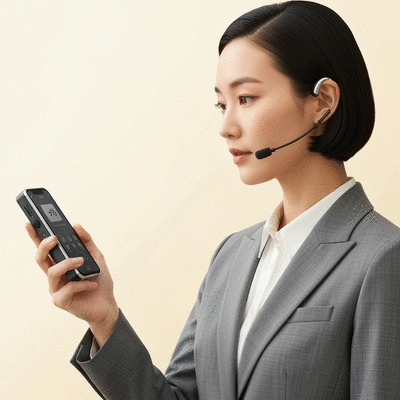
Choosing the Right Tools for Your Needs
When it comes to navigating the challenges of hearing loss, selecting the right tools is crucial. At HearWise Living, I understand that everyone’s communication needs are unique. That’s why I encourage you to evaluate various options based on your preferences and daily interactions. By doing so, you can find the best tools that enhance your communication experience.
Start by reflecting on your specific needs. Are you primarily communicating through text, speech, or a combination of both? This consideration will guide you in choosing apps and devices that fit seamlessly into your lifestyle.
Evaluating Features Based on Communication Preferences
There are several key features to consider when evaluating communication tools:
- Real-Time Functionality: Look for apps that offer instant captioning or transcription to facilitate smooth conversations.
- User-Friendly Interface: Choose tools that are intuitive and easy to navigate, especially if you're not tech-savvy.
- Language Support: Ensure that the app or device caters to your preferred language or dialect, enhancing clarity during communication.
- Customization Options: Some tools allow you to adjust settings according to your hearing preferences, making them more effective.
Taking these features into account will help you select tools that truly meet your communication needs. Remember, it’s about finding what works best for you! For further guidance on selecting suitable devices, check out our article on setting up Bluetooth hearing aids.
Making Informed Decisions: Comparing Apps and Devices
With so many options available, it can be overwhelming to choose the right app or device. Here’s a simple process to help you compare effectively:
- List potential apps and devices that fit your communication style.
- Research their features and read user reviews to gauge effectiveness.
- Consider the cost and whether the tool offers value for your specific needs.
- Ask friends or family for their experiences with particular tools.
By following these steps, you’ll be equipped to make informed decisions. You deserve tools that will empower your communication journey!
Exploring Communication Boards and AAC Devices for Enhanced Expression
In addition to apps, consider augmentative and alternative communication (AAC) devices and communication boards. These tools can significantly enhance your ability to express yourself. Some key benefits include:
- Visual Support: They provide visual cues that aid in communication, making it easier to convey thoughts.
- Versatility: Many devices can be customized to suit your specific vocabulary and preferences.
- Accessibility: AAC tools can bridge the gap in various environments, whether at home, work, or social settings.
Using these tools can lead to more meaningful interactions, ensuring that your voice is heard loud and clear!
Frequently Asked Questions (FAQs)
- What are the main communication challenges for people with hearing loss?
- Individuals with hearing loss often face challenges such as feeling isolated during conversations, struggling to keep up in group settings, and difficulty understanding context and tone due to impaired hearing.
- How can technology improve communication for those with hearing loss?
- Technology offers solutions like Bluetooth-enabled hearing aids, real-time captioning apps (e.g., Google Live Transcribe), speech-to-text applications, and assistive listening devices, all designed to bridge communication gaps.
- What features should I look for when choosing a communication tool?
- Key features to consider include real-time functionality (for instant captioning/transcription), a user-friendly interface, support for your preferred language, and customization options to match your specific hearing preferences.
- What are AAC devices and how do they help?
- Augmentative and Alternative Communication (AAC) devices and communication boards provide visual support, versatility through customizable vocabulary, and enhanced accessibility in various environments, helping individuals express themselves more effectively.
- What is a simple tip for enhancing communication with someone who has hearing loss?
- Maintaining eye contact during conversations is a highly effective tip. It shows engagement and allows the person with hearing loss to use visual cues and lip-reading, aiding in better understanding.
Recap of Key Points
- Effective communication involves understanding context, tone, and emotions, not just hearing words.
- Utilizing active listening techniques, visual aids, and creating quieter environments can enhance interactions.
- Technology such as Bluetooth hearing aids and real-time captioning apps can significantly improve communication experiences.
- Evaluate communication tools based on features like real-time functionality, user-friendliness, and customization options.
- Consider augmentative and alternative communication (AAC) devices for enhanced expression and accessibility.

